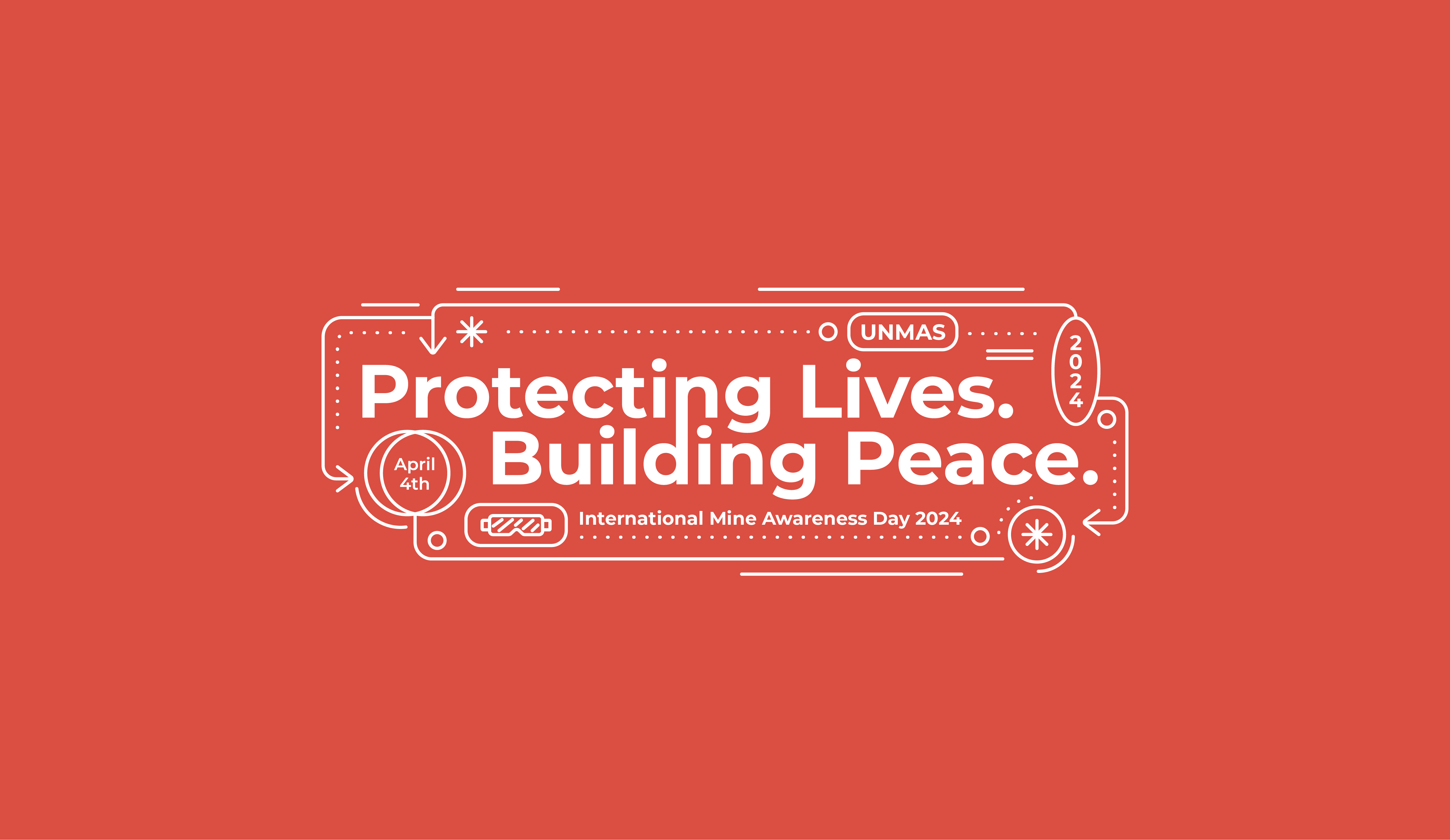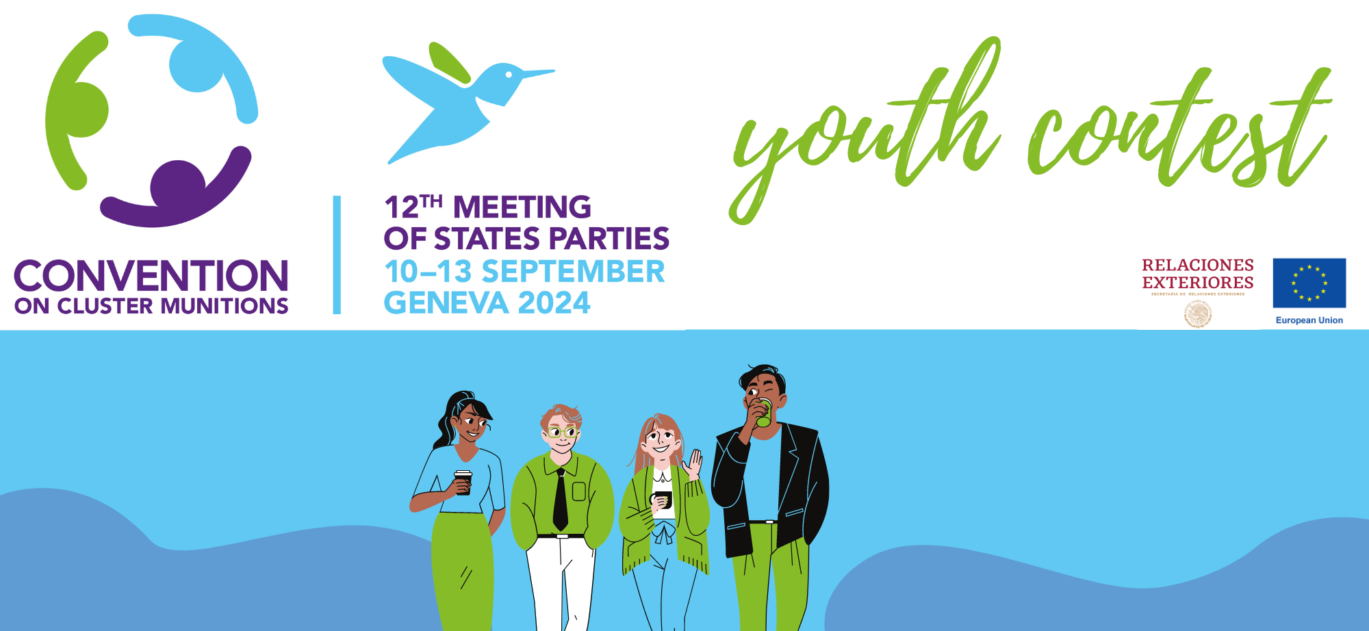Challenges, Opportunities and Way Forward: Convention on Cluster Munitions Implementation Support Unit Statement on the Occasion of International Day for Mine Awareness and Assistance in Mine Action

Geneva 4 April 2024 – On the occasion of International Day for Mine Awareness and Assistance in Mine Action and as the Convention on Cluster Munitions (CCM) marks 16 years of life-saving action, international disarmament efforts are at a crossroads. Today, a peak in global conflicts tests international humanitarian and human rights norms in a way unseen for three decades. Yet, in the face of these challenges lies a unique opportunity for coordination and cooperation on common disarmament, peace, and development interests, where Convention stakeholders and disarmament partners can seize opportunities for complementary action.
Today, the work of CCM States Parties and partners and the objectives of the Convention are more relevant than ever to peace and security aims espoused by States globally.
Multilateralism, international cooperation, and the primacy of international humanitarian law (IHL) and international human rights law at the core of the Convention, are tools for navigating current geo-political impasses. The Convention belongs to all States, especially those impacted by the devastating legacy of cluster munitions, and serves as a tool for ensuring the human security and welfare of all peoples.
The Convention on Cluster Munitions is a strong example of the contribution of humanitarian disarmament to peace and development aims. Since the CCM came into force in August 2010, States have achieved great progress towards eliminating the global danger from the weapon and its enduring legacy.
As of 2023, all States Parties to the Convention have completed destruction of their cluster munitions stockpiles, with four States announcing completion in the past year: Bulgaria (June 2023), Slovakia (September 2023), South Africa (September 2023) and Peru (December 2023). The extent and impact of remaining contamination from the weapon varies widely, however all affected States have made substantial gains in clearing deadly cluster munition remnants, through national resources and in partnership with international CCM stakeholders, thus preventing further tragedies.
Among these:
- Afghanistan has released 58% of land contaminated with cluster munition remnants;
- Chad has addressed nearly 70% of areas believed to be contaminated;
- Chile has released some 70% of the reported contaminated areas;
- Germany has addressed approximately 56% of the reported contaminated areas;
- Iraq has cleared half of all areas reported with cluster munition contamination:
- Lao PDR, with the largest amount of cluster munition contamination globally (total extent still unknown), has cleared an impressive 700 km2, since the CCM’s entry into force in 2010; and
- Lebanon has released approximately 92% of the reported contaminated areas.
These laudable achievements have not only prevented further cluster munition casualties, but arguably have had a positive and profound impact on development prospects for countries dealing with the legacy of the weapon.
Possibly the most profound impact of Convention on Cluster Munitions implementation has been the redefinition of the concept and practice of assistance to victims, and of the term “victim” itself. Under the Convention, cluster munition victims include:
“…all persons who have been killed or suffered physical or psychological injury, economic loss, social marginalisation or substantial impairment of the realisation of their rights caused by the use of cluster munitions. They include those persons directly impacted by cluster munitions as well as their affected families and communities.”
The CCM embodies the people-centred approach to humanitarian action, as championed most recently by the UN Secretary General in the New Agenda for Peace.
Challenges
While the Convention has significantly contributed to global peace and development actions since entering into force, humanitarian disarmament efforts overall are facing steep challenges today, and the Convention is no exception. Global military spending reached an astounding and unprecedented US$ 2.24 trillion in 2023 according to the Stockholm International Peace Research Institute (SIPRI). However remarkable, that figure still does not account for the true human cost of weapons – and specifically weapons banned due to their express impact on civilians. Use of cluster munitions in the context of the recent and ongoing conflicts in Myanmar, Syria, Yemen and Ukraine continues to threaten lives and contaminate communities. Additionally, normalization of the banned weapon due to use and third State transfers threatens to roll back the progress made during the past decade and a half.
A review of Convention implementation clearly illustrates that in spite of serious financial and geopolitical challenges, progress is being made, and with a concerted push and focused international assistance, several States can successfully eliminate this deadly threat from their territories within a short time period.
The long-term effects of cluster munitions on livelihoods, development, peace and security cannot be overestimated. The pernicious and long-lasting physical, psychological, economic, social, and environmental impact of cluster munitions on individuals and broader communities, is highly visible today in Cambodia, Lao PDR and Vietnam decades after their use, and more recently, in Iraq and Lebanon. Lao PDR, an early champion of the Convention and host to the First Meeting of States Parties, has been dealing with the impact of cluster munition contamination for 50 years, with ongoing casualties and economic repercussions today. The extent of contamination from the weapon today in Ukraine, a territory more than 2.5 times that of Lao PDR, is unknown, and will only be told with the cessation of the conflict.
A Convention Protecting Our Future 
Cluster munitions overwhelmingly impact children; children accounted for over 70 per cent of the cluster munition casualties recorded in 2022. Schools, medical facilities and other civilian infrastructure have increasingly come under attack in conflicts from Myanmar, to Syria to Ukraine. The language and actions taken under the Convention clearly and specifically emphasize the imperative to protect the welfare of our most precious development resource: children. This is exemplified by the central role of risk education at country operation level and the attention paid to ensuring diverse and inclusive mine action efforts overall, as illustrated in the 2021 Lausanne Action Plan.
As indiscriminate weapons that devastate communities for generations, cluster munitions overwhelmingly affect young people. On the occasion of International Mine Awareness and Assistance in Mine Action Day, the CCM is calling attention to the critical importance of engaging youth in humanitarian disarmament discussion. Together with the European Union, the Mexican Presidency of the Convention on Cluster Munitions invites young people, aged 18-29, to share thinking, insights, and perspectives on how the unacceptable harm caused by cluster munitions impacts lives, through the Youth for Humanitarian Disarmament multimedia contest.
Opportunities
International Mine Awareness and Assistance in Mine Action Day 2024 is an opportunity for the international community to take stock of the missed development, peace and security opportunities of postponing or deprioritizing investments in humanitarian disarmament mechanisms, norms and efforts, including work undertaken by Convention on Cluster Munitions States Parties.
Investment in the CCM and humanitarian disarmament more broadly contributes directly to mutually reinforcing objectives shared with the UN 2030 Sustainable Development Goals, the Convention on the Rights of Persons with Disabilities, the Convention on the Rights of the Child, and the UN Security Council Resolution on Women, Peace and Security, among others, in addition to promoting international human rights law, and international humanitarian law norms for the benefit of all.
“The peace that we envisage can be pursued only alongside sustainable development and human rights.”
– UN Secretary General, A New Agenda for Peace
The Way Forward
Today’s interlinked and multi-layered challenges require a holistic approach where mine action serves as a tool for broader humanitarian disarmament. This approach is at the centre of the Convention on Cluster Munitions Lausanne Action Plan which outlines a roadmap for protecting lives, empowering victims and enabling development. The Action Plan echoes the call by the UN Secretary General’s New Agenda for Peace, for solidarity, trust and universality, as a basis for the international cooperation desperately needed to ensure humanitarian disarmament peace and development goals:
- Solidarity – among States to ensure support and assistance for communities devastated by the legacy of cluster munition contamination. With limited support, several States stand ready to eliminate the threat of cluster munitions remnants from their territories, representing countless lives saved, and lateral peace and development dividends. Timely assistance is required to help them reach that goal.
- Trust – in multilateralism and the imperative of international law including human rights law and IHL, to ensure the safety, human security and well-being of all persons – girls, boys, women and men.
- Universality – among States in supporting humanitarian disarmament, upholding the IHL norm, and agreeing to never under any circumstances; use, produce, stockpile, or transfer cluster munitions; or assist in any activity prohibited under the Convention on Cluster Munitions.
The Convention on Cluster Munitions was adopted in Dublin by 107 States on 30 May 2008 and signed in Oslo on 3 December the same year. The Convention became binding international law when it entered into force on 1 August 2010. To date, a total of 124 States have joined the Convention – 112 States Parties and 12 Signatories.
Click here for the list of States Parties, Signatories and States not Party.
________________________________________________________________________________________
Resources
- CCM Youth for Humanitarian Disarmament Multimedia Contest
- X @ISUCCM
- Facebook https://www.facebook.com/ISUCCM/
- UNMAS International Day for Mine Awareness and Assistance in Mine Action 2024
- Hashtags #CCMISU, #Youth4Disarmament, #IMAD2024, #MineAction, #ProtectAndBuild
